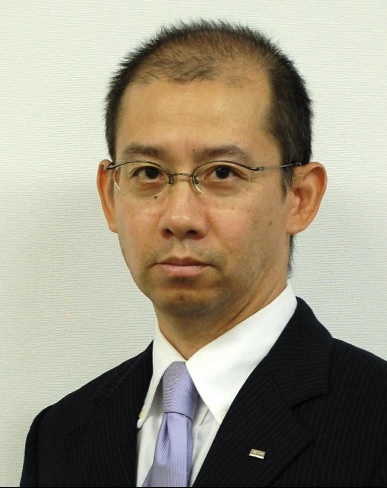Comprehensive List of Researchers "Information Knowledge"
Department of Information Engineering
- Name
- MURASE, Tutomu
- Group
-
Information Network Systems Group
- Title
- Professor
- Degree
- Doctor of Information Science
- Research Field
- Quality of Service control (QoS) / Congestion Control / Advanced Information Network / Mobile Network / Internet / Network Measurement / Traffic Control / Admission Control / Network Design / Overlay Network / Cyber Security

Current Research
QoS Control and Congestion Control for High Quality Information Network
Research areas of our laboratory include architecture and control for high reliable and high quality (called high performance) networks for smart society. High performance networks should have the following functions; control and management of personal/enterprise data security for privacy and copyright, congestion control of network traffic for high communication quality such as throughput, delay and loss, and network design, provisioning and control to always provide mobile users anywhere with broadband access or large bandwidth. In order to achieve such high performance networks, our laboratory is doing several research projects such as;
[1] Overlay networks for quality control
Network should be built to accommodate many/major applications which have different individual quality of service (QoS) requirements. For example, live video broadcasting requires shorter delay, and file transfer generally requires high throughput. Ideally, each application uses each specific network, although network cost for constructing and maintaining becomes high. Thus, it is reasonable that undelay networks have common functions such as routing for packet delivery, then overlay networks have application specific functions such as QoS control. Currently the Internet is made as “KISS (Keep It Simple and Stupid)”. Overlay networks are promising solutions to achieve application specific networks.
In this project, proposed functions for QoS improvements is implemented on an overlay network (called session overlay network) and exchange traffic in overlay relay manner according to individual application requirements. Since the functions eventually terminate TCP sessions, they can also become an enforced performance proxy for TCP. This results in TCP performance improvement, for example from 20 Mbps to 100 Mbps in throughput between Tokyo and Osaka.
[2] Performance measurement, analysis and control for wireless LAN
Wireless LAN is getting popular in public and private. Since frequency band of ISM that IEEE802.11 wireless LAN can uses is an unlicensed one and mobile wireless LAN is increasing, there happens to have many wireless LANs in a small area. The mobile wireless LANs include tethering smartphones/tablets and portable APs. Wireless LANs that are highly densely deployed can cause QoS performance degradation because they interfere each other and CSMA/CA does not work well. The situation “highly densely deployed” was not significantly thought when specification of wireless LAN was developed in a standard body. So, it is required to make it clear how much the performance is degraded and how the performance can be improved. This project challenges to reveal characteristics of QoS and to develop control for performance improvement.
Another challenge is to evaluate and develop infrastructure-less communication such as DTN, M2M, D2D and IoT.
[3] Dependable network system
Almost all systems are designed with using network function since broadband access for the Internet is becoming popular. The infrastructure of the Internet can be said to be a lifeline of today’s smart society. The infrastructure has vulnerability and is threatened by attacks using malicious and unmalicious traffic such as distributed denial of service (DDoS) attack. Unfortunately, this attack is very popular in these days and can very effectively degrade QoS in many commercial sites and servers. For example a lot of TCP connection set up requests from many clients may cause overload in TCP connection set up processing in CPUs of the corresponding server. Because a fake IP address is usually used, it is difficult to back trace the attackers. Because the clients may be distributed in a variety of sub-networks and each client emits a small amount of traffic to the victim server, then it is also very difficult to detect the attacks in a client side. This project proposes a hierarchical detection system which detects a small amount of traffic for the attacks in a client side. The idea of the system is invariants analysis and majority decision. The proposed system well worked even in a two level hierarchy and drastically improved detection performance.
Another concern for the network to be threatened is an elephant traffic. Although the traffic does not intend to be threaten the network, the network would have to regulate the traffic in order to operate network with providing a specific QoS with the other users. Server migration is one of such applications. Several Giga-bit data can be transferred in the network in a server migration. The migration can occur in a worldwide because the Internet has borderless nature. For example a user temporally moves from A to B. From the point of QoS, it is better for his/her servers to move to the nearest data center to B. For a network game such as car rally, it is better for the server to move to the convenient location such as at the middle of the game users. Problems are tradeoff between the application users and other users when the servers migrate through the networks. The migration cause massive impact to the network and may degrade the other users’ QoS. The project also involves to develop solutions to the server migration problems. The proposed migration system gives maximum migration convenience within specified network impact.
[4] User cooperative mobility
So far, so many network control mechanisms have been proposed and developed. There can be less room to drastically improve network performance. It is time to change a paradigm for network control. In a new paradigm, users are not only benefiter but also a part of control mechanism. In other words, users can pay less for a network with participating a control mechanism. This is an extension of a level in a Pareto optimal system. We call it Pareto optimal network. In this project, user cooperative mobility is proposed. It can be a solution of one of such Pareto optimal network.
One of user cooperative mobility is longcut route selection. In the route selection, a user choose not short cut from A to B but longcut according to the user’s utility function. Considering higher speed wireless LAN access points, user wants to go through the access points even if they are not located on the shortest path. Another user may select a different path because the user wants to have continuous network access with more than a specific speed. Another user cares battery consumption other than network speed or continuity. Another user is interested in video streaming such as Youtube. The user want to download as possible in an access point before the user leaves. Proactive contents delivery helps such users to download as possible in an access point by shortening data retrieve time.
Another user cooperative mobility is distance control in wireless LAN systems. Wireless LAN is very sensitive with a distance from sending terminal to receiving terminal. If wireless LAN users (or terminals) can move closer to the corresponding users (or terminals or access points), QoS is improved without any control mechanism. Since wireless LAN provides almost even throughput with all users shared a channel, both a user which participates the user cooperative control and other users can obtain more throughput. This holds true in a mobile wireless LAN system which is consists of tethering devices or portable APs and portable terminals such as smartphones, tables and laptop PCs. This project reveals relations between cost for moving and gain for QoS, and develop n to improve QoS or user utility.
Career
- (Professional Experience)
- April 2015 – Present: Professor
- Graduate School of Information Science, Nagoya University
- April 2012 – March 2015: Visiting Professor
- Graduate School of Information Science and Engineering, Tokyo Institute of Technology
- September 2012 – March 2013: Adjunct Professor
- Ochanomizu University
- September 2010 – March 2011: Adjunct Professor
- Ochanomizu University
- April 2007 – September 2014: Adjunct Professor
- Osaka University
- April 2004 – September 2004: Adjunct Professor
- Osaka University
- July 1999 – March 2015: Principal Researcher
- NEC Corporation
- July 1992 – June 1999: Assistant Manager
- NEC Corporation
- April 1986 – June 1992: Researcher
- NEC Corporation
- April 2015 – Present: Professor
- (Education)
- March 2004: Dr. Information Science, Osaka University
- March 1986: M. Eng. in Information and Computer Sciences, Osaka University
- March 1984: B. Eng. in Information and Computer Sciences, Osaka University
Academic Societies
- Fellow, The Institute of Electronics, Information and Communication Engineers (IEICE),
- Member, The Institute of Electrical and Electronics Engineers (IEEE)
Publications
- Tutomu Murase, “Burstserver Architecture for ATM Wide Area Networks,” IEEE Grobal Communications Conf (GLOBECOM)1994 , Vol. 2 of 3, pp. 1231-1237, 1994.
- Tutomu Murase, Hideyuki Shimonishi, Masayuki Murata, “Overlay Network Technologies for QOS Control,” IEICE Transaction on Communications,, Vol. E89-B No.9 pp.2280-2291, 2006.
- Tutomu Murase, Kosuke Uchiyama, Yumi Hirano, Shigeo Shioda, Shiro Sakata, “MAC-Frame Receiving-Opportunity Control for Flow QoS in Wireless LANs,” IEICE Transaction on Communications, Vol. E92-B No. 1, pp.102-113, 2009.








